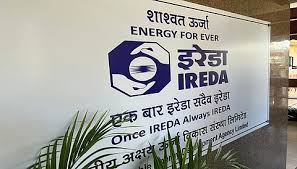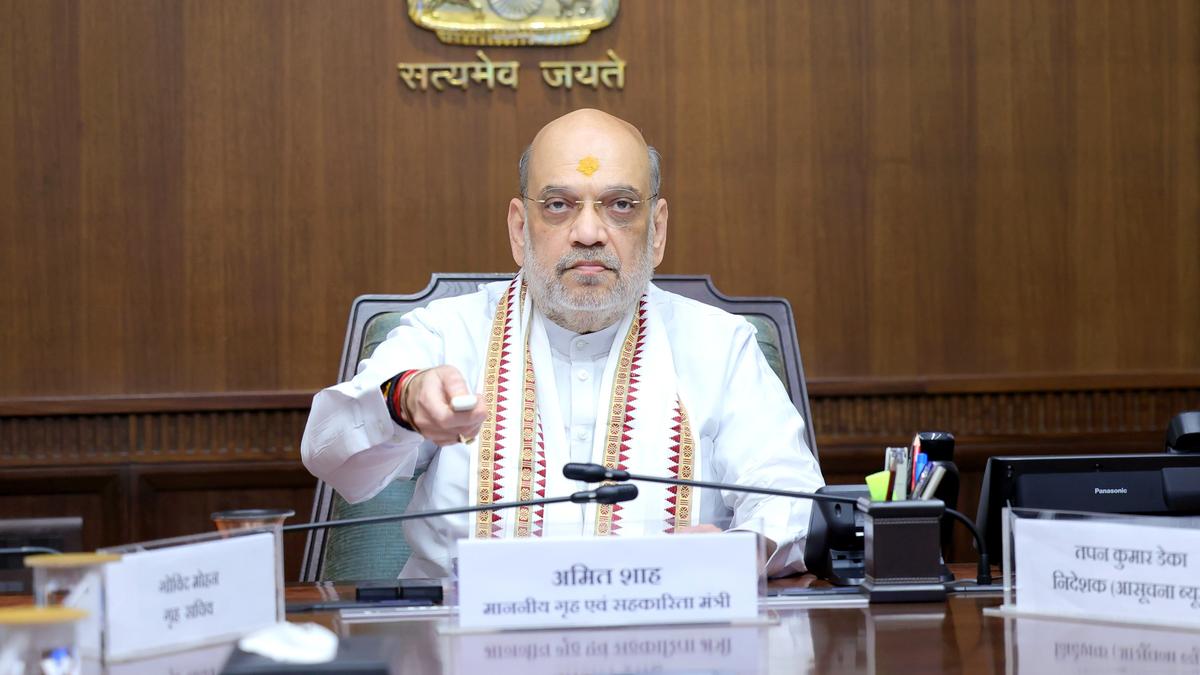Perpetual Bonds

- 13 Sep 2025
In News:
- The Indian Renewable Energy Development Agency Ltd (IREDA) has successfully raised ?453 crore through its second issue of Perpetual Bonds at an annual coupon of 7.70%.
- The issue received bids worth ?1,343 crore against the base size of ?100 crore and a Green Shoe option of ?400 crore, resulting in an oversubscription of 2.69 times.
- This fund infusion will help IREDA strengthen its capital base and enhance its ability to finance green and renewable energy projects, in line with India’s clean energy transition goals.
What are Perpetual Bonds?
- Definition: A type of fixed-income security with no maturity date, paying interest indefinitely. They are also called “perps” or “consol bonds.”
- Redemption: Issuers are not obligated to repay the principal, though most bonds have a call option after 5–10 years, allowing issuers to redeem them if market conditions are favorable.
- Returns & Risk:
- Offer higher interest rates to compensate for indefinite tenure.
- Highly sensitive to interest rate fluctuations.
- In case of bankruptcy, bondholders are paid after secured creditors but before shareholders.
- Accounting Perspective: Often treated as equity-like instruments on balance sheets, making them attractive for strengthening capital structure without diluting ownership.
- Usage in India: Commonly issued by banks and financial institutions to meet capital requirements.
Significance of IREDA’s Move
- Capital Strengthening: Provides a stable, long-term source of funds without creating repayment obligations.
- Boost to Renewable Energy: Ensures greater financing availability for solar, wind, bioenergy, and emerging green technologies.
- Market Confidence: Oversubscription reflects investor trust in India’s renewable energy sector and in IREDA’s financial stability.
- Policy Alignment: Supports India’s commitment to achieve 500 GW of renewable capacity by 2030 and transition towards net-zero by 2070.
Isobutanol

- 13 Sep 2025
In News:
- The Government of India is exploring the possibility of blending isobutanol with diesel, following the limited success of earlier attempts at blending ethanol with diesel.
- At the annual conclave of the India Sugar and Bio-Energy Manufacturers Association (ISMA), Union Minister for Road Transport and Highways, Nitin Gadkari, announced that the Automotive Research Association of India (ARAI) is conducting trials to test the feasibility of 10% isobutanol–diesel blends. Alongside blending, isobutanol is also being considered for standalone fuel applications.
- This development comes at a time when India has been pushing for higher ethanol blending with petrol (20%), but challenges remain in extending the same success to diesel, which accounts for the bulk of transport fuel consumption.
About Isobutanol
- Chemical Nature: An alcohol with the chemical formula C?H??O and one of the four isomers of butanol.
- Physical Properties:
- Clear, colorless liquid with a distinct odor.
- Moderately soluble in water.
- Highly flammable with a flash point just above room temperature.
- Vapors are heavier than air, making handling risky.
- Health Hazards: Prolonged exposure can cause skin irritation, eye damage (including vision loss), and respiratory issues.
Applications of Isobutanol
- Industrial Uses: Widely used as a solvent in paints, coatings, lacquers, flavor and fragrance industries, pharmaceuticals, and pesticides.
- Food Additive: Approved for limited use; also found naturally in some foods and alcoholic beverages.
- Biofuel Potential:
- Can be manufactured from plant-based sources using fermentation, often derived from ethanol.
- Higher energy density (heating value) compared to ethanol.
- Less corrosive and less hygroscopic than ethanol, enabling easier storage and transport in existing infrastructure.
- High octane rating, making it suitable for internal combustion engines.
- Unlike ethanol, it does not significantly distort vapor pressure when blended with gasoline.
Significance for India
- Energy Security: Diversifying biofuel options can reduce reliance on crude oil imports.
- Environmental Benefits: Biofuel adoption helps lower greenhouse gas emissions.
- Industrial Opportunities: Opens new avenues for sugar and bio-energy industries, which are central to India’s ethanol economy.
- Policy Alignment: Supports the government’s push towards alternative fuels and cleaner mobility under initiatives like the National Bio-Energy Mission.
Fast Track Immigration-Trusted TravellerProgramme

- 13 Sep 2025
In News:
- The Union Home Minister recently launched the Fast Track Immigration – Trusted TravellerProgramme (FTI-TTP) at five additional airports — Lucknow, Thiruvananthapuram, Tiruchirappalli, Kozhikode, and Amritsar — further expanding its coverage across the country.
- The initiative aims to provide seamless, secure, and faster immigration clearance for Indian citizens and Overseas Citizen of India (OCI) cardholders.
Background and Coverage
- Launch: First introduced at Delhi’s Indira Gandhi International (IGI) Airport in 2024.
- Latest Expansion: Now operational at 13 airports nationwide.
- Nodal Agency: Implemented by the Bureau of Immigration (BoI) under the Ministry of Home Affairs (MHA).
Objectives
- To reduce waiting time at immigration counters.
- To enhance international mobility of Indian citizens and OCI cardholders.
- To ensure convenient yet secure border management using digital technology.
Enrollment and Process
- Online Registration: Applicants must apply via the official portal https://ftittp.mha.gov.in, providing personal details and uploading documents.
- Biometric Capture: Collected either at Foreigners Regional Registration Offices (FRROs) or at the airport.
- Immigration Process at e-Gates:
- Boarding pass scan to fetch flight details.
- Passport scan for identity verification.
- Biometric authentication (fingerprint/face scan).
- Automated clearance — the e-gate opens within 30 seconds, eliminating the need for manual checks.
- Validity: Enrollment remains valid until the passport expires or for five years, whichever is earlier, with provision for renewal.
Significance
- Cuts down long queues at airports, reducing clearance time to under 30 seconds.
- Aligns with India’s vision of Digital Governance and Smart Borders.
- Enhances traveller experience, particularly for frequent international flyers.
- Strengthens security protocols through biometric and digital verification.
National Forest Martyrs Day 2025

- 13 Sep 2025
In News:
- National Forest Martyrs Day is observed annually on September 11 to pay tribute to forest officials, personnel, and community members who have sacrificed their lives while protecting India’s forests and wildlife.
- The day recognizes the risks undertaken in the line of duty against threats like illegal logging, poaching, encroachment, and forest fires.
Historical Background
- The observance is rooted in the Khejarli Massacre of 1730 in present-day Rajasthan. When Maharaja Abhai Singh of Marwar ordered the felling of Khejri trees for palace construction, the Bishnoi community, led by Amrita Devi Bishnoi, resisted by embracing the trees. In the brutal crackdown, 363 villagers lost their lives to protect their sacred groves.
- This legacy later inspired environmental movements such as the Chipko Movement (1970s), reinforcing India’s tradition of community-led conservation. Recognizing this historic sacrifice, the Ministry of Environment, Forest and Climate Change (MoEFCC) officially declared September 11 as National Forest Martyrs Day in 2013.
Significance
- Commemoration of Sacrifice: The day honours not only the Bishnoi martyrs but also countless forest personnel who have died in the line of duty.
- Environmental Awareness: Highlights the critical role of forests in climate regulation, biodiversity conservation, and ecosystem services like air and water purification.
- Community Involvement: Encourages local communities to uphold traditions of eco-conscious living.
- Policy Emphasis: Reinforces the need for stronger laws and protection mechanisms for natural resources and frontline forest staff.
Observance
The day is marked through:
- Memorial ceremonies in forest departments.
- Tree plantation drives to promote ecological restoration.
- Awareness campaigns and educational programmes in schools and communities.
- Community participation to spread the message of sustainable living and conservation.
All India Debt and Investment Survey (AIDIS) and Situation Assessment Survey (SAS) of Agricultural Households (2026–27)
- 13 Sep 2025
In News:
- The National Statistics Office (NSO), under the Ministry of Statistics and Programme Implementation (MoSPI), is set to conduct two of its flagship household surveys — the All India Debt and Investment Survey (AIDIS) and the Situation Assessment Survey (SAS) of Agricultural Households — during July 2026 to June 2027.
- These surveys are part of the broader framework of the National Sample Survey (NSS), initiated in 1950, which provides critical data on consumption, employment, health, indebtedness, and welfare, forming the backbone of evidence-based policymaking in India.
All India Debt and Investment Survey (AIDIS)
- Origin and Evolution: Traces its roots to the All India Rural Credit Survey (1951-52), later expanded in 1961-62 to cover debt and investment. Since then, AIDIS has been conducted roughly once every decade, with the latest in the 77th Round (2019), at the request of the Reserve Bank of India (RBI).
- Coverage: Captures data on household indebtedness, savings, and asset ownership across rural and urban households.
- Significance:
- Inputs for national accounts and measurement of wealth distribution.
- Helps assess inequality in asset ownership and functioning of credit markets.
- Provides a crucial evidence base for the RBI, MoSPI, and financial policymakers.
Situation Assessment Survey (SAS) of Agricultural Households
- Launch and Expansion: Initiated in 2003 to examine the economic conditions of farmers, expanded in 2013 to cover all agricultural households, and further refined in the 2019 round.
- Scope of Coverage:
- Income and expenditure patterns of agricultural households.
- Indebtedness and credit access.
- Ownership of land and livestock.
- Crop and livestock production, farming practices, and adoption of technology.
- Access to government schemes, including crop insurance.
- Policy Relevance: Used extensively by the Ministry of Agriculture and Farmers Welfare, NITI Aayog, researchers, and financial institutions to frame policies for agriculture and rural development.
